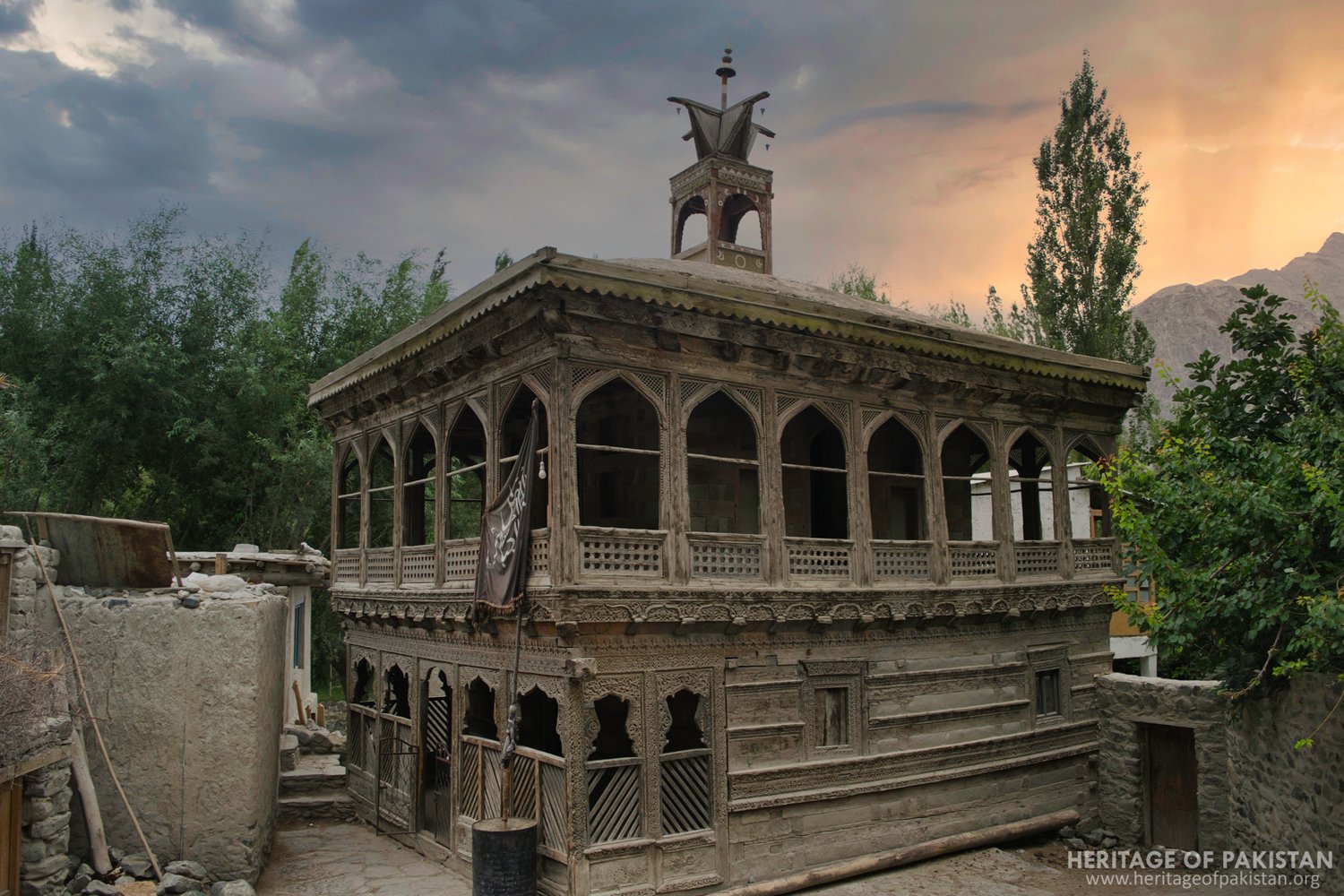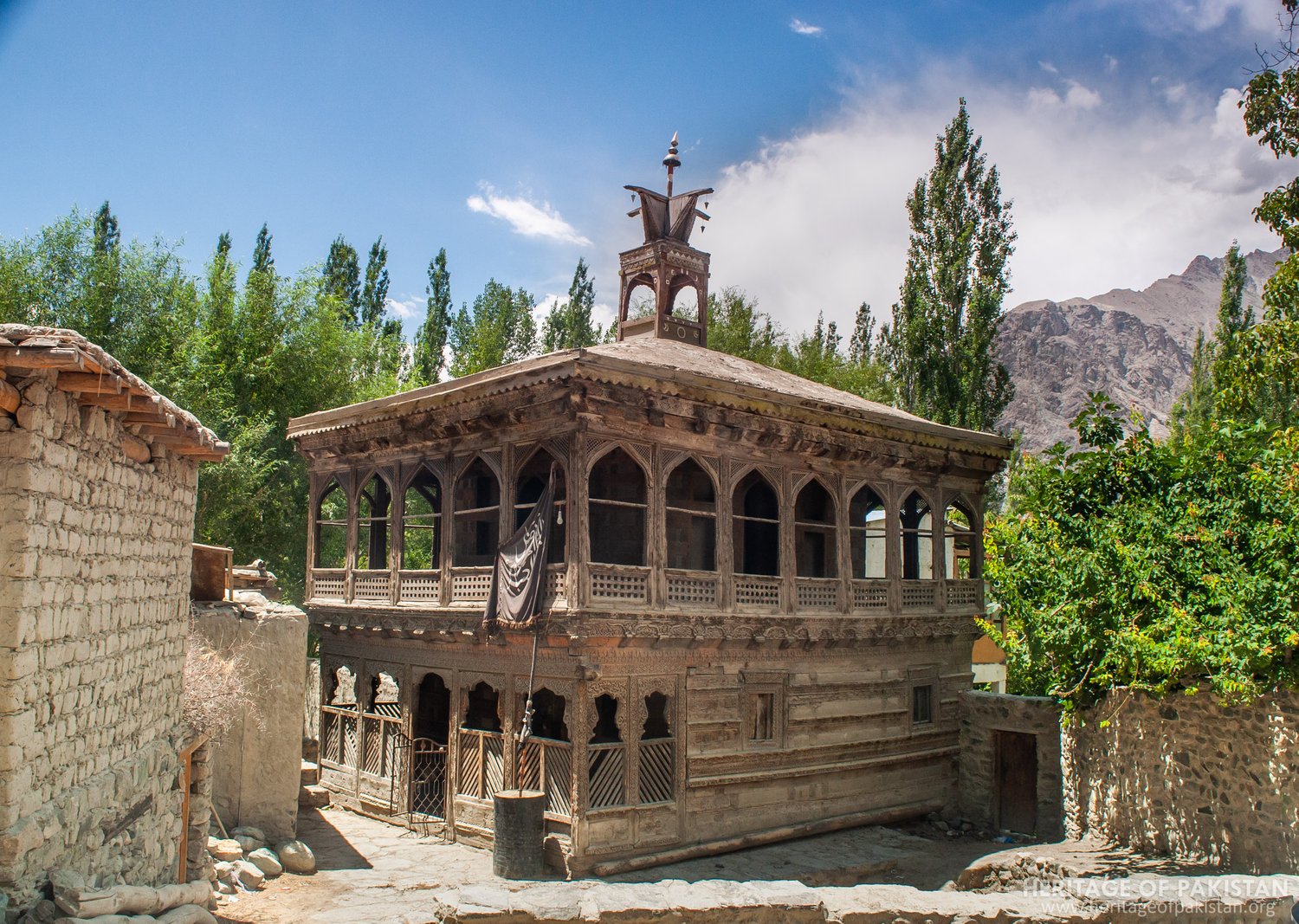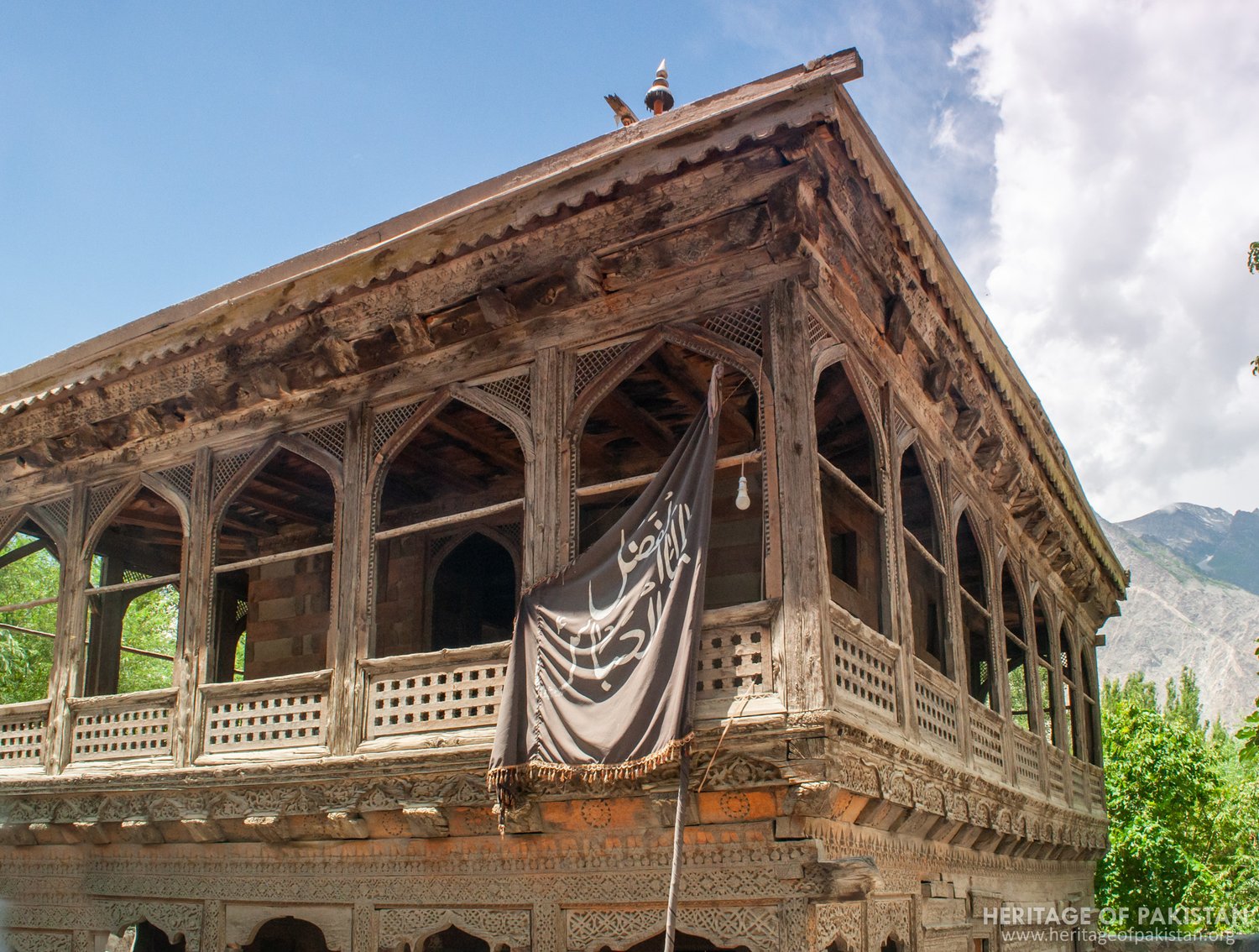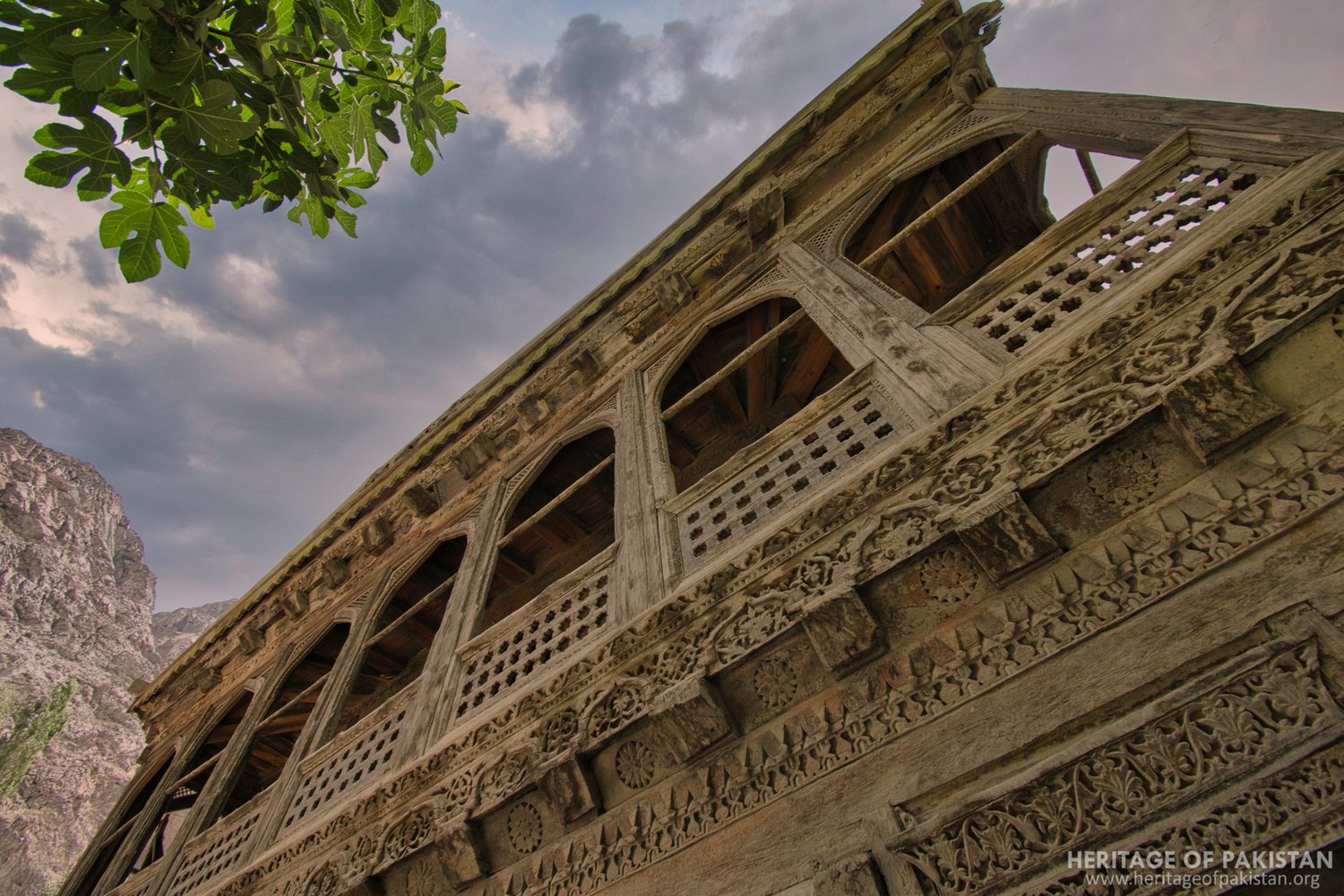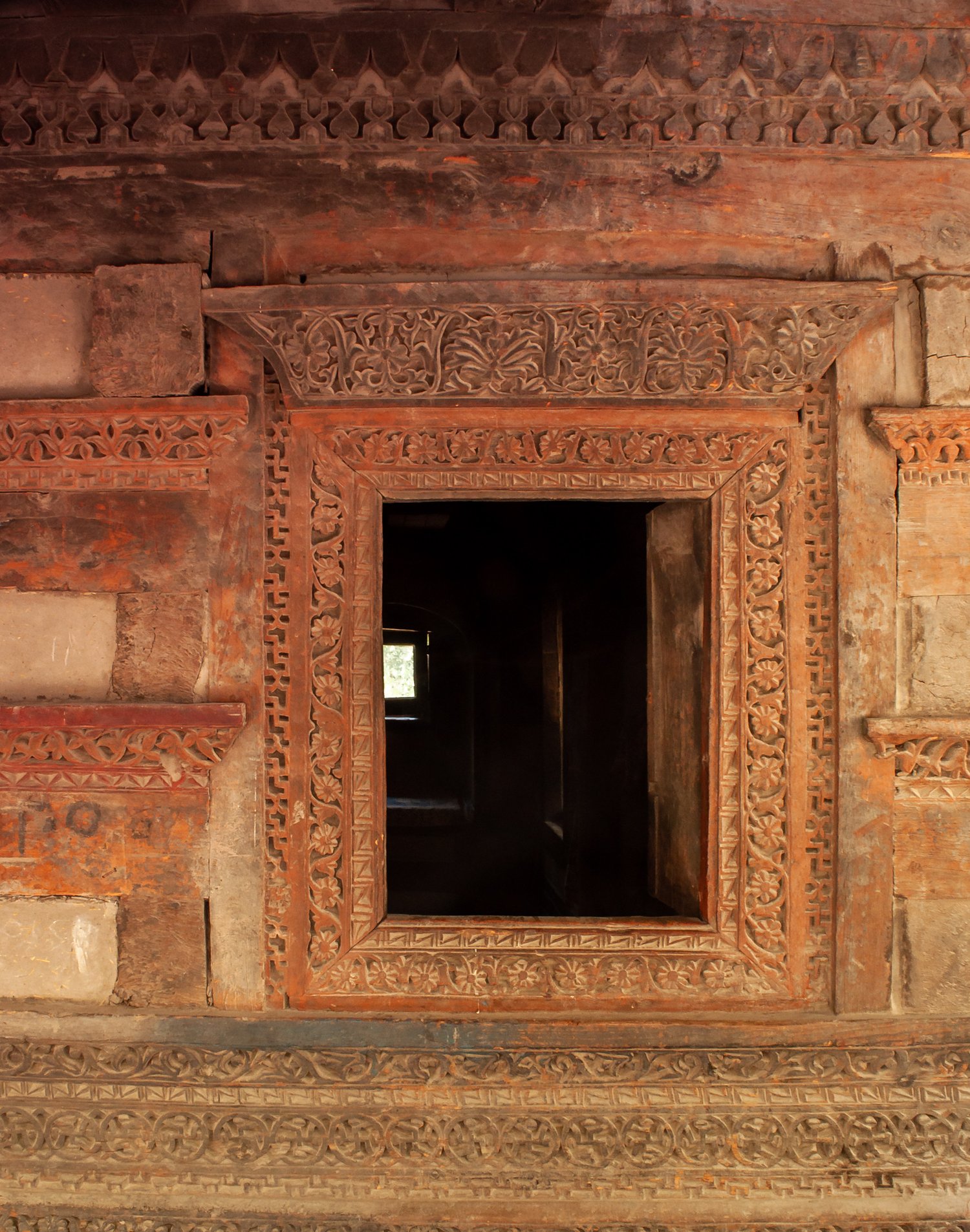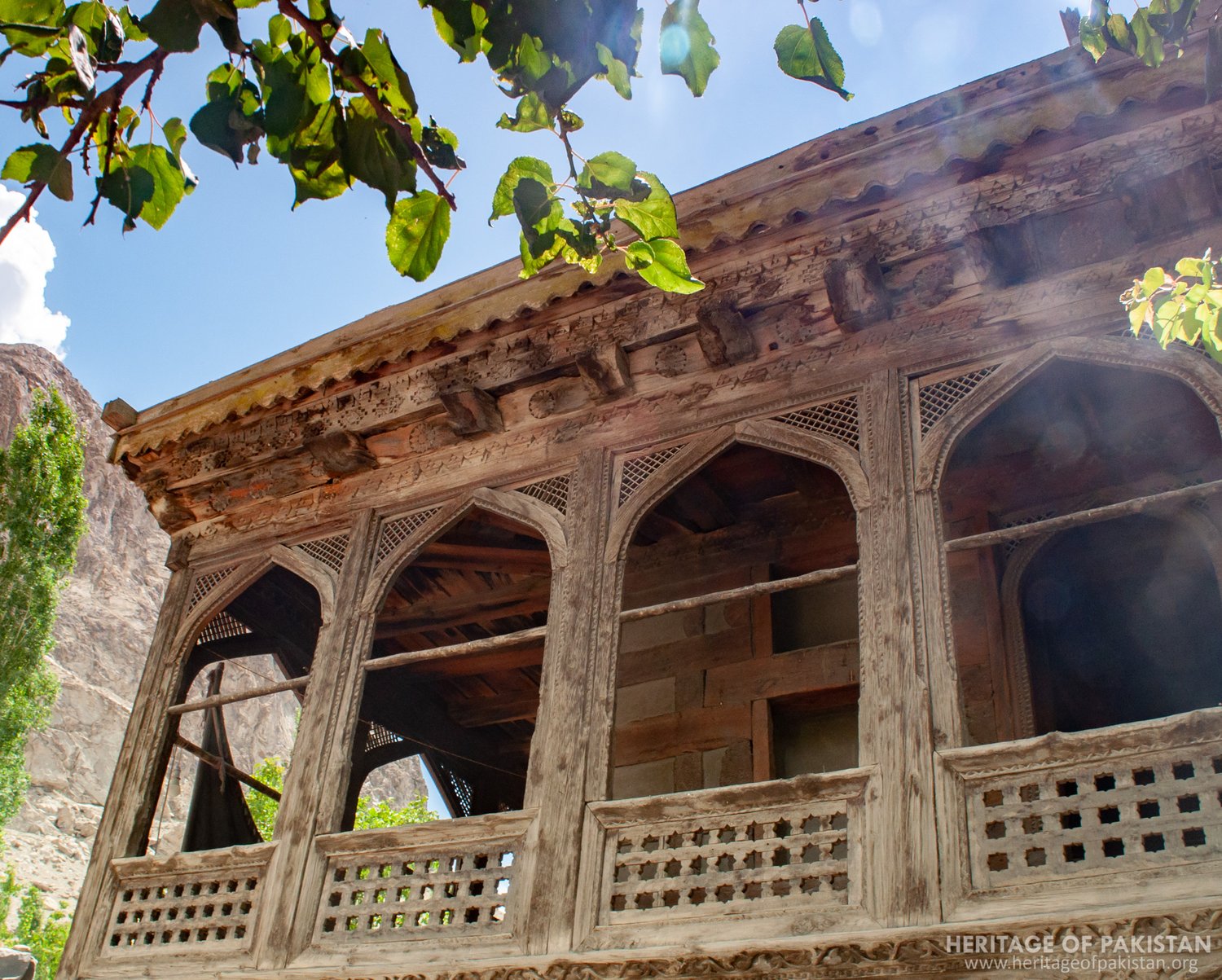Textarea
Khilingrong mosque is an ornate 400-year-old mosque situated in Shigar valley near the Shigar Fort, built by the Amacha Raja during the early 17th century
It's a fascinating traditional structure of great architectural significance and value, incorporating Tibetan, Kashmiri, and indigenous Balti elements in its design.
Its intricate woodwork carvings, featuring a fusion of floral and geometric patterns, are particularly remarkable for their meticulous detail and craftsmanship.
The mosque has a central square base plan with a converging pyramidal top, a design form associated with Tibetan and Himalayan architecture
Its intricate engravings feature a blend of geometric patterns, drawing from Buddhist and Tibetan architectural influences, and floral motifs reminiscent of Kashmiri styles
The Khilingrong mosque is structured with two levels: ground and first. On the first floor, there is also a prayer hall, mirroring the one found on the ground floor, complete with a central column.
The mosque's walls are adorned with continuous friezes of these geometric and floral engravings, bordered throughout.
On the first floor, Islamic geometric patterns adorn the Jalis, or latticework, influenced by Persian architecture. Known as Panjiras, these lattices are crafted by assembling small wooden pieces into intricate geometrical shapes and patterns
Both structural and non-structural components of the Khilingrong Mosque feature elaborate wood carvings. Even the window frames are intricately carved with patterns.
The Agha Khan Cultural Service restored the mosque in 2002. The amazing restoration work was awarded the UNESCO Asia Pacific 'Award of Excellence’ for Historic Conservation in 2012,

